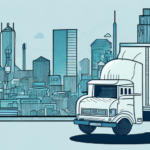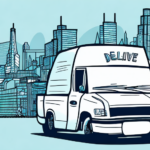Introduction to Becoming a Parcel Driver
Parcel delivery is a cornerstone of modern commerce, especially with the exponential growth of e-commerce. Aspiring parcel drivers can find this career path rewarding, offering opportunities for those who enjoy driving and prefer working independently. Before diving into this profession, it’s crucial to understand the industry landscape, job requirements, and the skills necessary to excel.
Understanding the Parcel Delivery Industry
Industry Growth and Trends
The parcel delivery industry has witnessed significant growth, driven primarily by the surge in online shopping. According to Statista, global e-commerce sales are projected to reach $6.54 trillion by 2023, up from $4.28 trillion in 2020. This growth underscores the increasing demand for parcel delivery services worldwide.
Environmental Sustainability Challenges
With the rise in delivery volumes, the industry faces the challenge of balancing efficiency with environmental sustainability. The increase in delivery vehicles contributes to air pollution and traffic congestion. Many companies are adopting electric vehicles and exploring drone deliveries to mitigate these issues. Additionally, innovative packaging solutions are being implemented to reduce waste and promote recycling.
Job Description and Requirements
Key Responsibilities
- Transporting parcels to designated destinations efficiently and on time.
- Interacting with customers to collect signatures and ensure satisfaction.
- Maintaining accurate delivery records and adhering to company policies.
- Loading and unloading parcels, ensuring their safe transport.
Essential Requirements
Prospective parcel drivers must possess a valid driver's license with a clean driving record. Familiarity with navigation tools and local roads is essential. Additionally, physical fitness is important for handling and lifting packages. Strong time management and communication skills are also critical to meet delivery deadlines and interact effectively with customers.
Skills and Qualifications
Technical Skills
- Proficiency with GPS navigation systems and electronic devices.
- Basic math skills for calculating distances and fuel consumption.
Soft Skills
- Excellent time management and organizational abilities.
- Strong communication and customer service skills.
- Reliability and a positive attitude towards work.
Advantages and Challenges of Parcel Driving
Advantages
- Flexible working hours adaptable to personal schedules.
- Opportunities to enjoy driving and being on the road.
- Potential for performance-based incentives and bonuses.
Challenges
- Physical demands of lifting and handling heavy packages.
- Exposure to adverse weather conditions and long hours of driving.
- Managing customer expectations and handling complaints.
- Navigating through busy urban areas and remote locations.
Career Growth and Opportunities
Advancement Paths
Experienced parcel drivers can advance to supervisory roles, managing teams of drivers. Additionally, there are opportunities to transition into logistics, operations management, or specialized roles such as hazardous goods handling.
Training and Development
Many companies offer training programs to help drivers develop additional skills, such as forklift operation or advanced delivery techniques. Continuous learning is encouraged to keep up with technological advancements in the industry.
Preparing for a Career as a Parcel Driver
Educational and Professional Preparation
- Obtain a valid driver's license and maintain a clean driving record.
- Gain experience through related driving or delivery jobs.
- Develop strong time management and communication skills.
Application Process
The journey to becoming a parcel driver typically involves applying through company websites or job portals, undergoing interviews, and completing driving assessments. Successful candidates receive training on company procedures, safety protocols, and delivery software.
The Future of Parcel Delivery
Technological Innovations
Technology is revolutionizing the parcel delivery industry. Innovations such as real-time tracking, autonomous delivery vehicles, and drone deliveries are enhancing efficiency and reducing delivery times. These advancements aim to meet the growing customer demand for faster and more reliable services.
Sustainability Initiatives
Companies are increasingly focusing on reducing their carbon footprint through the adoption of electric vehicles and sustainable packaging materials. These initiatives not only address environmental concerns but also appeal to eco-conscious consumers.
Conclusion
Becoming a parcel driver offers a promising career path for individuals who enjoy driving and value independence. Understanding the industry's dynamics, meeting job requirements, and developing essential skills are key to succeeding in this role. With ongoing advancements in technology and sustainability, the future of parcel delivery looks robust, presenting numerous opportunities for growth and innovation.






















